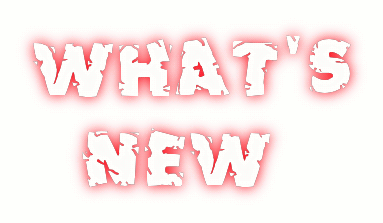A full length documentary on Residential Schools: a painful Canadian legacy
|
|||||||||||||||
| |||||||||||||||
Child Removal & The First NationIntroduction of Residential SchoolsAccording to the opening paragraph of Wikipedia on "Canadian Indian residential school system", it read: The Canadian residential school system was a place in which aboriginal children were abused and neglected. [It was] founded in the 19th century, intended to force their assimilation into European-Canadian society. The purpose of the schools, which separated children from their families, has been described by many commentators as "killing the Indian in the child." Many Canadians do not know much about the residential schools. Despite a strong direct link between residential schools and child protection, some of us may think that they are legacy from the previous millennium and bear little relevancy in modern time. We will further discuss the similarities between the two regimes below. First and foremost, atrocities like the residential school and the Sherry Charlie tragedy are possible because government has the authority to remove children from their families based on the opinion of bureaucrats and supported by financially motivated service providers of the child protection industry (hereinafter known as the industry unless otherwise specified). Residential school is an extreme form of child removal. It is mandatory and discriminatory based on ethnic profiling. This policy of "cultural assimilation" is clearly for the purpose of assimilating (and hence destroying) native culture and families until the Aboriginal people ceased to exist as an independent sovereign nation. Such notorious activities were needed for political reasons in the early era of the white man regime not only in Canada but also in most English-speaking nations (like the United States, Australia, New Zealand and, of course, the United Kingdom) with a colonial history. The propaganda film aired by CBC on the right was made by the Canadian government in 1955. It painted a rosy picture that authorities wanted the public and Natives to believe. Like modern "child protection", this infamous and tactful oppression was done under the pretext of "helping" Natives to acquire a "better life" by integrating them into the white man society. This strategy was very successful in suppressing Native resistance against exploitation and invasion of Native rights and land. |
|
Like supervised visits in modern child protection, parents of removed Aboriginal children had to camp outside the gates of the residential schools to see their children. The first residential schools were established in the 1840s with the last residential school closing in 1996. During this time span, hundreds of thousand of Aboriginal families were destroyed when their children were forcibly removed and placed in government-sponsored residential schools.
Since the beginning of time, children have been used as pawns for political purposes. Almost all English-speaking nations evolved from colonial governments during the expansion of colonialism in the 19th century have a history of removing aboriginal children from their families under the pretext of "improving" their welfare or "protecting" them from the "corrupting influence" of their "barbaric" parents. For example, Canada and another British Commonwealth country Australia both have a hideous history of using "cultural assimilation" policy to destroy the native people and get their lands. We have developed a new page titled "Australian Experience" to further elaborate on what is known as the "stolen generation", which is part of the theme in the 20th Century Fox movie "Australia" (2008). The Australian stolen generation and the Canadian residential schools are results of cultural assimilation policy imposed on the Aboriginals.
The main purpose of state-sponsored child removal is to weaken the targeted victims and to reduce the perceived threat of the regime. This is a very powerful weapon and will bend the will of the toughest mind. Youngsters are easy targets. Like predators in the animal world targeting the young and the weak for food, human beings are of no difference when striving for survival, money, power and fame. The future of a people is effectively destroyed by sabotaging their offsprings. As open massacre and ethnic cleansing are not viable options in those so-called "free and democratic" nations, oppression to achieve a political end done in a more subtle but equally effective manner sugar coated by a noble cause carries many added advantages and raises many questions surrounding state-sponsored child removal.
A Disturbing Canadian History
In 1857, Canada passed the Gradual Civilization Act to assimilate surviving Native Indians. Residential schools became the prime tool of assimilation. By 1920, compulsory attendance for all Native Indian children was enforced. Catholic priests, Indian agents and police officers forcibly took Native children away from the families and dumped them in residential schools run by white men.
Like the discrimination against early Chinese Canadian immigrants by enacting the racist Chinese Immigration Act, 1923 (known in the Chinese Canadian community as the Chinese Exclusion Act in 1923), residential schools were mandated by a Canadian federal statute called the Indian Act. Under this Act, the Canadian federal government provided funding to "educate" native peoples and integrate them into Western society with the intent of "encouraging self-sufficiency" within the First Nations. This system of "education" was a joint endeavor between the federal government and missionaries (mainly Roman Catholics and the rest by various Protestant denominations). Growth of the residential school system was ensured through an amendment to the Indian Act in 1920, making attendance mandatory for Native Indian children between the ages of 7 of 15. By 1930, the residential school program had reached its peak with roughly 80 institutions, mostly in Western provinces but stretching northward into the territories and eastward to Quebec. Today, the amended Indian Act is still in effect. Despite provisions stipulating mandatory Native child removal and placement into white man run residential schools had been repealed, Native families and children remain the largest victim of modern state-sponsored child removal activities. Atrocities in residential schools are supported by some alleged evidence.
The timeline below was extracted from "In Depth Aboriginal Canadians A timeline of residential schools" (Canadian Broadcasting Corporation). It summarizes major events surrounding the issue of Native Indian residential schools in Canada.

Similarities Between Residential Schools & Modern Child Protection
There are compelling reasons to believe that residential schools and modern child protection owe their origin and existence to an oppression of a very hideous nature against a weak and marginalized minority group. Residential school and state-sponsored child removal bear the following similarities:
|
|
|
Hover your mouse to pause the slide show and to view photo description.
|
- both are hypocritically done under the pretext of the noble cause of child protection and welfare;
- both are empowered by absolute statutory authority;
- both involve the use of force should targets ("beneficiaries" as government would like people to believe) dare to resist;
- Native Indian children and families are the prime victim in both regimes;
- both require fundings from taxpayers to generate business opportunities for some special interests involved in the process;
- both require removal of young children from their families to beat their parents into submission;
- both show no respect to the dignity and the free will of the subjects whom these regimes are supposed to help and protect;
- both are driven by quest of money and power;
- non-profit groups are involved to provide support and services in exchange of government funding in both regimes;
- both result in harming, at times, killing vulnerable children in government "care";
- both regimes are ineffective, cost inefficient and counter productive to serve their alleged intended cause (but very effective to serve their hidden purposes);
- both regimes cost taxpayers very dearly on reparation and damages from lawsuits of torts and wrongful deaths;
- both are oppressive, inhumane and barbaric;
- the true beneficiaries in both regimes are the service providers of the respective industries, not the intended subjects or the recipients of "service";
- special interests manipulate legislation and dictate government policies in both regimes;
- fear, public ignorance and apathy contribute to the success of both regimes.
These remarkable similarities suggest that modern child protection is a modified extension or a disguised derivative of the oppressive "cultural assimilation" policy expanded to all ethnic groups.
Political Implications of State Sponsored Child Removal

|
|
Published on 2 Jun 2015 in the National, residential schools victims and their children and grandchildren spoke on the atrocities created by state sponsored child removal.
|
Children are invaluable to most parents who are prepared to do anything to protect them and to keep them from being kidnapped. Children are vulnerable and easy to manipulate. Whoever control their hearts and minds will shape the future of a nation. The Gay Pride Movement, for instance, has been very successful in using this tactic to further their cause. Influencing children, often under a noble cause, is also an extremely effective weapon to destroy a sovereign power. This invasive concept has been used repeatedly in the course of history to achieve political results. A recent example is the well planned Anglo-American induced "Occupy Central with Love and Peace" movement (aka Umbrella Movement) in Hong Kong that began on 28 September 2014. Contrary to what its name suggests, there is neither love nor peace but only violence and hatred in the 79-day long riot.
The National (CBC) documentary video on the right contains several citations from government officials during the residential school era that parellel statements made by politicians in modern child protection regime. The Canadian federal government has decentralized child removal authority to provincial and territorial governments. State sponsored child removal became the mandate of provincial and territorial governments in the modern child protection era. All politicians who defend the industry now are at the provincial level.
However, the federal government still plays the role of financier of the child removal business by way of subsidies to Aboriginal child removals and Children's Special Allowances (CSA) which is a tax-free monthly federal payment made to agencies, institutions and foster parents who are responsible for the care and education of children (of any ethnic background) under 18 who physically reside in Canada and who are not in the care of their parents. One of the first few things child protection workers do after removing children is to notify Canada Revenue Agency that parents no longer have custody of removed children so that the ministry or the foster parents could start collecting CSA while child tax benefit payments to parents cease. Removed children are tools to get transfer payments.
During the early stage of the residential school era, not all Canadians were allowed to vote. Before the mid 20th century, visible minorities, Aboriginal peoples, and women have no right to vote. Aboriginal people are not granted the right to vote until the Canadian Bill of Rights received Royal Assent in 1960. "Political correctness" was less important in an era in which there was no TV and internet. Open racial discrimination was much more acceptable. Politicians in the residential era had more liberty to speak their minds without fearing any political consequences. Their statements surrounding child removal are more informative on the real intent of the child removal regime than those from their successors in modern time.
| Statements made in residential school era | Statements made in modern child protection era | Our comments | ||
| "The great aim of our leglislation has been to do away with the tribal sytem and to assimilate the Indian people in all respects." (Sir John A MacDonald, 2 May 1887). |
|
Errors do not cease to be errors simply because they are ratified into law. Child removal decisions are often made based on a bureaucratic opinion, not on good evidence. Despite the lengthy child protection hearing process, there is little due process in law. Both statute and case law are so lopsided in favor of child protection agencies. Corruption is authority plus monopoly minus transparency. Service providers are financially motivated to remove children. The real motives of instituting residential schools are replacing the First Nation as a sovereign power with a white regime through cultural assimilation, seizing resources and land, subjugating helpless Native children and parents under guns. Modern child protection is all about power, money and fame backed by its muscle - the police and rule of law. | ||
| "In order to educate these children properly we must separate them from their families. Some people may say that this is hard, but if we want to civilize them we must do that." (A federal cabinet minister, 1883). |
|
Civilizing and protecting children are nothing more than a pretext. There are numerous cases in children were removed without just cause or reasonable concern of child safety. Families are traumatized and some removed children are abused or killed in care. For example, 4-month old infant Delonna Sullivan died after 6 days in foster care in Edmonton, Alberta. Her removal from her mother Jamie Sullivan was completely incidental. Child protection workers came to remove the child of Jamie's roommate who was not home at that time. Delonna became their target. Child protection workers cannot leave empty handed. Noble causes are very much needed to cover up hideous business. Taking the moral high ground will put perpetrators in a better position to garner support, to evade responsibility when their activities backfire and, above all, to get more tax dollars to feed the racket. | ||
"Indian children in the residential schools die at a much higher rate than in their villages. But this does not justify a change in the policy of this Department, which is geared towards a final solution of our Indian Problem." (Duncan Campbell Scott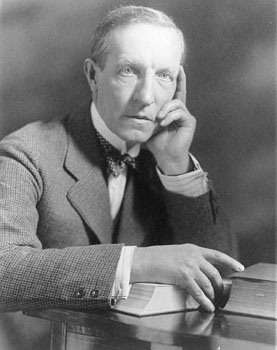 |
|
Final solution of the Indian problem and a child intervention system is one of hope are merely self-serving excuses to mitigate the damage created by state sponsored child removal.
Empirical evidence convincingly refutes that child removal improves child welfare. Many misleading allegations made by service providers are based on:
As long as most Canadians remain ignorant, misled, apathetic or afraid to speak out, the industry will be in business for a long time. Children will continue to die in care, more social problems will be created and more tax dollars wasted to finance the lifestyle of service providers, the true beneficiaries of the industry. |
||
| "Our objective is to continue until there is not a single Indian in Canada that has not been absorbed into the body politic and there is no Indian Question and no Indian Department." (Duncan Campbell Scott, Deputy Superintendent of Indian Affairs, 1 January 1920) |
|
MCFD's Aboriginal Child & Family Development
|
An Ontario Native Indian residential school and CAS victim speaks ...
This Native victim said in no uncertain term that CAS (Children Aid Society , MCFD´s counterpart in Ontario, a private organization that carries the same authority of child removal) is a derivative of residential school. He repeatedly said that residential school and CAS never answer his question why his case was handled the way it was. This bears remarkable similarity with MCFD when parents ask question on why the best interests of their children are not protected. Bureaucrats simply ignore the question.
|
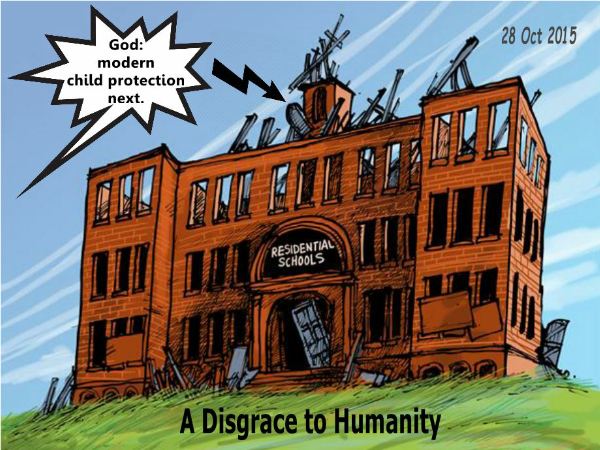
|
To deal with this special type of "client" from which federal subsidies could be obtained for social services rendered, MCFD has established a special Aboriginal Child & Family Development branch to improve outcomes for vulnerable Aboriginal children and youth. Some Aboriginal leaders and organizations are empowered to work collaboratively with MCFD in exercising jurisdiction in delivering child and family services. Of course, this includes exercising child removal power.
On the surface, this approach ensures Aboriginal people a say to design and deliver culturally appropriate child welfare services. Hence, the goals of restoring, revitalizing and strengthening First Nations communities are achieved. This brilliantly designed scheme does create an illusion that Aboriginal children will be better off in the good hands of their own people. It fails to address the corruption created by absolute power and financial motivation of service providers.
[10] of D.L.H. v. M.J.M., 2011 BCSC 1228 (CanLII) demonstrates that agencies that MCFD uses to provide services to aboriginal children and their families have no legal status and no separate legal existence from MCFD. They are, therefore, simply an arm of MCFD. The essence of the approach is to create service providers within the Aboriginal communities and turn them into beneficiaries of the industry. Despite their different ethnic background, they will eventually become puppet outfits that do the same child removal business under the control of their master. Such ruse is common in politics. For instance, the puppet state of Manchukuo (滿洲國) (1932 to 1945) and the Vichy France (July 1940 to August 1944) were used by victorious Axis powers to mitigate resistance of their invasion and exploitation.
Likewise, Aboriginal puppet outfits funded by MCFD will attract less resistance and project an impression that Aboriginal culture is respected. State sponsored child removal is a Western product created by primarily English speaking nations. We are not aware that the First Nation ever practices child removal until now. It is still cultural assimilation in a different sugar coating. It carries the added benefit of diluting or denying responsibility when removed Aboriginal children killed or abused in Aboriginal foster care.
The biggest advantage of this scheme is the creation of die hard supporters within the Aboriginal communities when the industry extends its beneficiaries to this ethnic group. When Aboriginal service providers taste the influx of easy tax dollars, they will share the same value with their mainstream counterparts and become supporters of the industry. Money talks.
Apology to Residential School Victims
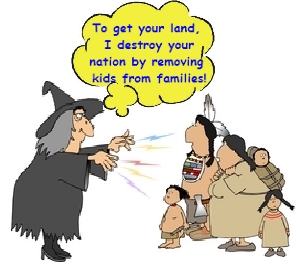
On 13 February 2008, Australian Prime Minister Kevin Rudd delivered an apology to the stolen generations of Australian Aborigines for removing them from their families and communities over a century. Canadian Prime Minister Stephen Harper followed suit. On 11 June 2008, he made similar apology to the First Nation in the House of Common. Nevertheless, his Conservative government is still funding the removal of native children on a per head basis. This creates financial incentive for provincial governments to target Native families. About 50% of children removed in British Columbia are Natives. As long as government has the power to remove children from their families, atrocities like the residential schools and abuse of authority are inevitable. The concept of residential school has re-emerged as "child protection". Instead of placing removed children in religious group operated residential schools, they are now placed in foster or group homes where some of them are abused and killed. It is a matter of time that governments enforcing state-sponsored child removal will have to face justice and apologize for implementing such hideous policy against their people.
Former Prime Minister Stephen Harper's statement of apology to the victims of residential schools given on 11 June 2008 (below) is applicable to victims of modern "child protection". Natives remain the largest victim in this disguised oppression under the pretext of "child protection" after residential schools were abolished. The yellow highlights below in the excerpts from the text of Harper's statement of apology bear remarkable similarities of the sufferings families endured when their children are removed by the state. French sections, which repeat the English text, have been excluded.
Crocodile Tears Shed Again
|
"Saying that we are sorry today is not enough. It will not undo the harm that was done to you. It will not bring back the languages and traditions you lost. It will not take away the isolation and vulnerability you felt when separated from your families, communities and cultures," Trudeau said.
All harms and atrocities mentioned therein also apply to children removed by child protection workers.
|
On 24 November 2017, Canadian Prime Minister Justin Trudeau apologized to hundreds of Newfoundland and Labrador indigenous residential school students in Happy Valley-Goose Bay. These students were forcibly removed from their families, placed into boarding schools and suffered sexual and physical abuse. The 2008 settlement and apology from Harper does not cover this group of victims in Newfoundland and Labrador because these boarding schools were not run by the Canadian federal government. Hence, the Trudeau government deemed necessary to repeat this political show as an apologetic gesture after about 1,000 residential school students accepted a $50-million settlement last year from the Trudeau government in a class-action lawsuit. Our handsome prime minister demonstrated that politicians are good at shedding sympathetic tears in front of TV cameras. They often apologize for wrongdoings that they cannot and will not be held accountable to gain brownie points from voters.
If you think that government wrongdoings have nothing to do with you, think again. Where does the $50-million settlement come from? Taxpayers. Perpetrators often walk free, indemnified and protected by government or are dead long before their wrongdoings are uncovered. Consequently, transgressors get away unpunished and history repeats itself. Such modus operandi renders establishing accountability in government very difficult.

The Prime Minister asked that all Canadians get involved in the healing process. How can healing process begin when a more oppressive state-sponsored child removal is still in place under the pretext of child protection? There is no coincidence that the largest victim in modern child protection remains indigenous children. The Canadian federal government continues to subsidize provincial governments on removal of First Nation children on a per head basis, hence providing financial motive for child protection agencies to target indigenous children nationwide. Many atrocities mentioned herein in this web site involve First Nation children.
Trudeau's tearful apology was not accepted by the Innu Nation. Innu leaders said the residential schools were only part of their painful experience as abuse of Innu children also took place in the Mount Cashel orphanage in St. John's, Roman Catholic schools and in the homes of missionaries and teachers in the communities of Sheshatshiu and Davis Inlet. Since those cases are not being recognized in the apology, the Innu Nation will not take part in this political show. This reveals a much broader and deeper harm created by state-sponsored child removal than what Trudeau's apology has admitted.
Residential schools are indeed a dark and shameful chapter in Canada's 150 years short history. How can this possibly happen in a so-called free and democratic nation? Because our government has the statutory authority to remove children based on a bureaucratic opinion without good evidence, often under the pretext of child protection. This authority can be used as a very powerful weapon for political purposes by assimilating, controlling, corrupting or destroying the offspring of a people. Residential schools clearly prove the foregoing with devastating consequences to the victim. This authority could be used against any individual or group of people. When service providers and bureaucrats are given absolute power, protected by the government, motivated by financial interests and job security, nothing other than revoking child removal authority could prevent abuse of power, corruption, and above all, harm to our children.
On another note, the Liberal federal government has legalized recreational use of marijuana effective 1 July 2018. Since many children are removed because of parent's substance abuse, legalization of marijuana may present a legal dilemma to argue that marijuana addicts are unfit parents. In view of the absolute power of child protection workers, we do not expect legalization of marijuana would take the wind out of their sails.
Concluding Remarks
|
Ethnic Breakdown of Removed Children in British Columbia
Source: MCFD reply to Freedom of Information application | ||||||||||||||||||||||||||||||||||||||||||||||||||||
Statistics above were provided by MCFD who claimed that it only compiles statistics between Aboriginal and non-Aboriginal groups. From a research perspective, keeping statistics on ethnic background and other demographic data of all children removed will shed light on identifying child abuse problems in each ethnic group, hence allowing policy makers to:
- identify the cause of the problem;
- take preventive measures to minimize the chance of child abuse;
- allocate resources and to make policies to deal with the problem more efficiently.
It appears that MCFD has a keen interest only in keeping track of the number of Aboriginal children removed. Statistics are a key performance measure of how well Aboriginal families are "helped" and to claim subsidies from the federal government on a per head basis. Federal funding also sheds light to explain a strange phenomenon that some "child protection" social workers in British Columbia insist to classify families with very little Native blood as Native Indian families.
|
Removed Native children in foster homes reached 27,000 in 2006 and surpassed the number of children who were being forcibly removed from their families during the height of the residential school era.
Studies have shown that the provinces provide welfare to other Canadian children at rates that are 22% higher than the amount given by the federal government to first nations children, said Mr. Atleo. Ottawa is responsible for social assistance on reserves where the levels of poverty and the associated problems are higher than most other places in Canada.
|
On 25 February 2013, a hearing before the Canadian Human Rights Commission was held to examine whether Ottawa is treating native children unfairly. Shawn Atleo, the National Chief of the Assembly of First Nations, was one of the first people to testify. He alleged that studies have shown that the provinces provide welfare to other Canadian children at rates 22% higher than the amount given by the federal government to first nations children and hold Ottawa responsible for social assistance on Aboriginal reserves where the levels of poverty and the associated problems are higher than most other places in Canada. In a phone interview, Mr. Atleo said that the numbers of children from reserves in foster care � estimated at 27,000 in 2006 � has surpassed the number of children who were being forcibly removed from their families during the height of the residential school era. They are being deprived of their language, their culture and the places they call home. The federal government�s refusal to provide equitable child welfare on reserves is forcing thousands of youth into foster care and ripping families apart in ways that echo the notorious residential school system of previous decades, says the head of the organization that represents Canada�s first nations.
This hearing is all about equity of child welfare funding. Who is the true beneficiary? A good portion of government fundings goes into the pockets of service providers in the child protection industry. The services they render may be of minimal value or even counter productive. The root of the problem is not insufficient or inequitable funding. It is the general child removal authority and the financial incentives provided by federal and provincial governments to remove children from their parents under the pretext of child safety. Those who support this regime is like legally authorize and pay someone to shoot them.
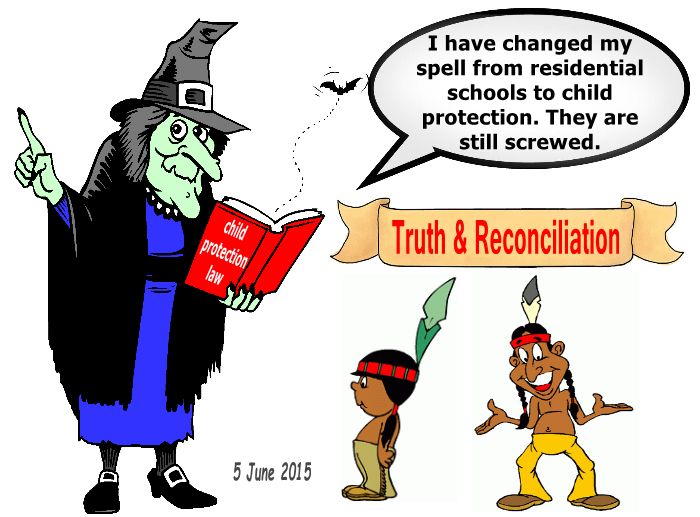
Interestingly, nations (like Japan and China) with more homogeneous ethnic mix do not have oppressive "child protection" law and policy similar to those in Canada. In spite of some rare real child abuse cases (a social problem that no law could ever eliminate), countries that do not have such destructive "child protection" law ironically have better disciplined children and stronger family ties from which a nation is built. They certainly do not have the problem of wrongful child abuse conviction on parents (a "false positive" or Type I error in statistical term) as their social workers do not have the authority to remove children. Does it mean that children in these nations are not adequately protected? Absolutely not.
As Canadians become less tolerant of prejudice, oppression and corruption in recent years, the industry evolved from blatant open oppression to subtle persecution under the noble pretext of child protection. The child protection industry is fully aware of its keys to success and will use them to the best advantage of its service providers and to maximum their financial interests. It is safe to contend that modern child protection is a sugar-coated derivative of the now renounced residential schools. How could one denounce residential schools and yet praise modern child protection when the two regimes are essentially the same? It is illogical.
Child removal does not equal child protection. Absolute power to remove children is seldom called for and will corrupt absolutely. Such power is open to abuse not only by government and service providers but also by other parties such as estranged spouses, hostile in-laws and malicious informants for reasons other than child protection. After all, there is a due process of bail hearing in criminal law that allow authorities to legally separate abusive parents from vulnerable children. "Child protection" law contains provisions that allow bureaucrats to circumvent due process in law and creates an extremely powerful bureaucracy. There is little check and balance to curb corruption. Child removal authority is oppressive, redundant and counterproductive. As long as government retains child removal authority, our safety and freedom are in jeopardy.



